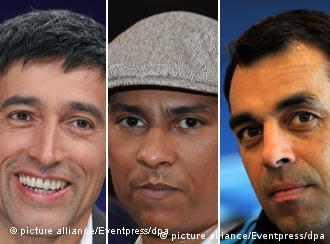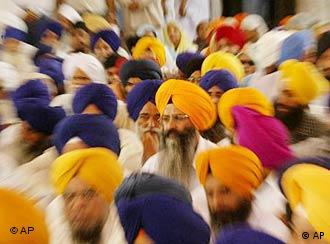Gandhi, Bollywood and Computer: Indians in Germany and the clichés
Journalist Ranga Yogeshwar, singer Xavier Naidoo and Leverkusen football club coach Robin Dutt all have something in common: they all have Indian roots.

Indo-German relations go back to the 16th century. This is when the Ausburg Fugger family first established trade contacts with India. India’s cultural diversity was already praised by Germany’s national poet Johann Wolfgang von Goethe in the 19th century. But Germany and India only really got to know each other when India became independent from Great Britain in 1947 and the German Federal Republic was established in 1949. Today, politicians from both countries rave about their strategic partnership. Economically, Germany is India’s largest trade partner in the European Union. And during her visit to India in 2008, German Chancellor Angela Merkel highlighted another area of cooperation that needed to be developed – the sciences. At the moment, there are just 5,000 Indian students in Germany. And there are currently only 45,000 people of Indian origin in Germany – this is very low compared to the two million Turks.
Students, nurses, asylum seekers
But in the 1950s and 1960s many young Indians came to Germany to study – mainly medicine and natural sciences. Germany was considered to be a world leader in science and technology at the time. Many of the students stayed here, integrating without difficulty and building up recognized careers as doctors, scientists and engineers. In the 1970s, it was mainly nurses and nuns from Kerala in India’s south who came to Germany after being invited by Catholic institutions.

In the 1980s, it was mainly Sikhs who made up the Indian community in Germany – members of a religious community that was established in the 15th century in northern India, whose male members wear a turban. Many of them sought asylum in Germany. They said that they were persecuted in India because of their beliefs. But the German authorities did not believe most of them. Instead, the young and poorly qualified men had to resort to marrying German women so as to get a residence permit, or going into illegal hiding. Today there is an important Sikh community in and around Frankfurt.
Gandhi, holy cows and incense sticks
Until recently, many Germans used to reduce India to the clichés of Mahatma Gandhi, holy cows, poverty and incense. This perception only began to change when India radically liberalized the markets 20 years ago. This led to the current economic growth of around 8 percent annually and to a boom in the largest democracy of the world. These days, India is no longer considered a developing country in the world but as an upcoming superpower. That’s why India has confidently demanded a permanent seat in the UN Security Council. For many years now, Germany has been trying to lure India’s young, highly-qualified and multi-lingual IT experts from Bangalore or Hyderabad. In 2001, the former German Chancellor Gerhard Schroeder introduced a Green Card, which had a checkered success story. Many Indians considered the US and Great Britain to be more attractive than Germany because of the language and longstanding tradition of immigration. And the CDU politician Juergen Ruettger’s infamous “children instead of Indians” slogan continues to deter some Indians today.